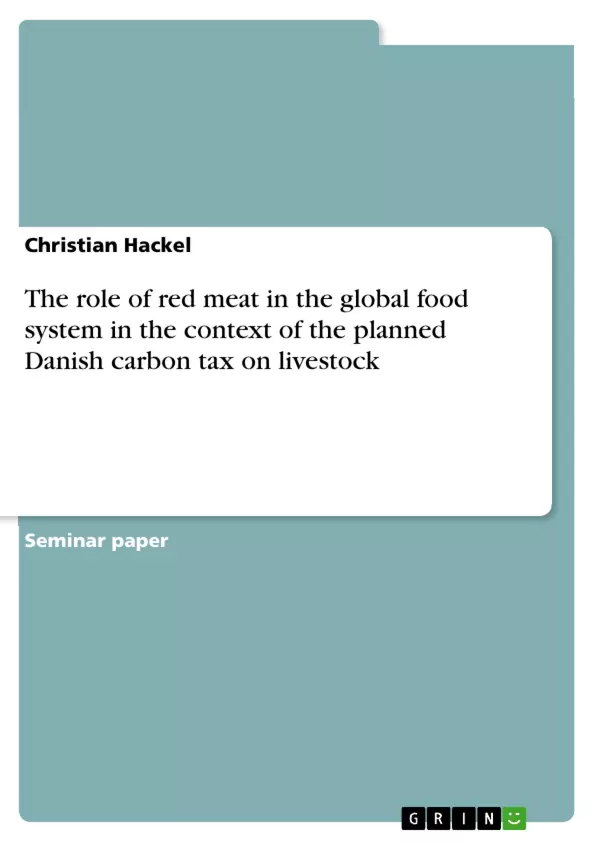We as mankind face a complex challenge: feeding a growing global population, while preserving the environment for future generations and limitng global warming. The global food system causes approx. 26% of global Greenhouse Gas (GHG) emissions, with livestock-associated farming and land use as key drivers. At the same time, almost 10% of the global population are currently exposed to hunger and one third to moderate or severe food insecurity. Scholars project a continued global demand growth for livestock-derived food for decades to come. This is partially driven by an ongoing population growth but also by dietary changes, stemming from a rising prosperity and cultural shifts.
In light of the significant GHG footprint of livestock, this calls for new policy approaches. Starting from the main environmental and social impacts of red meat production and consumption, this text will explore to what extent carbon pricing can be a suitable element for effective climate change mitigation by taking a closer look at the planned Danish carbon tax on livestock.
Inhaltsverzeichnis (Table of Contents)
- Introduction
- The role of red meat in the global food system
- Environmental Impacts
Zielsetzung und Themenschwerpunkte (Objectives and Key Themes)
This essay explores the role of red meat in the global food system, focusing on the environmental impacts of its production and consumption. It examines the potential of carbon pricing, specifically the planned Danish carbon tax on livestock, as a climate change mitigation strategy. The essay considers the contrasting perspectives on red meat consumption in developed and developing nations, acknowledging both its nutritional benefits and its contribution to various health and environmental issues.
- The environmental impact of red meat production and consumption.
- The role of red meat in global food security and nutrition.
- The potential of carbon pricing as a climate change mitigation tool in the livestock sector.
- The contrasting perspectives on red meat consumption in developed and developing countries.
- The need for context-specific and internationally coordinated policy instruments.
Zusammenfassung der Kapitel (Chapter Summaries)
- Introduction: This section introduces the complex challenge of feeding a growing global population while preserving the environment and mitigating climate change. It highlights the significant contribution of the global food system, particularly livestock farming, to greenhouse gas emissions and the prevalence of food insecurity. The essay's focus on the planned Danish carbon tax on livestock is introduced.
- The role of red meat in the global food system: This section discusses the global increase in red meat production and consumption over the past 50 years, highlighting the projected further increase, particularly in middle-income countries. It then contrasts the perspectives on red meat consumption in developed and developing nations, emphasizing its nutritional importance in addressing malnutrition in the latter while acknowledging its potential health risks in the former.
- Environmental Impacts: This chapter details the substantial environmental impacts of livestock farming, particularly concerning greenhouse gas emissions, biodiversity loss, and water usage. It specifically highlights the large carbon footprint of beef compared to other food products and the significant contribution of ruminant animals to methane and nitrous oxide emissions. The impact of land use change for agriculture is also discussed.
Schlüsselwörter (Keywords)
Red meat, global food system, greenhouse gas emissions, carbon pricing, climate change mitigation, food security, nutrition, sustainable food production, Danish carbon tax, livestock farming, environmental impacts, One Health.
- Quote paper
- Christian Hackel (Author), 2024, The role of red meat in the global food system in the context of the planned Danish carbon tax on livestock, Munich, GRIN Verlag, https://www.grin.com/document/1504778



